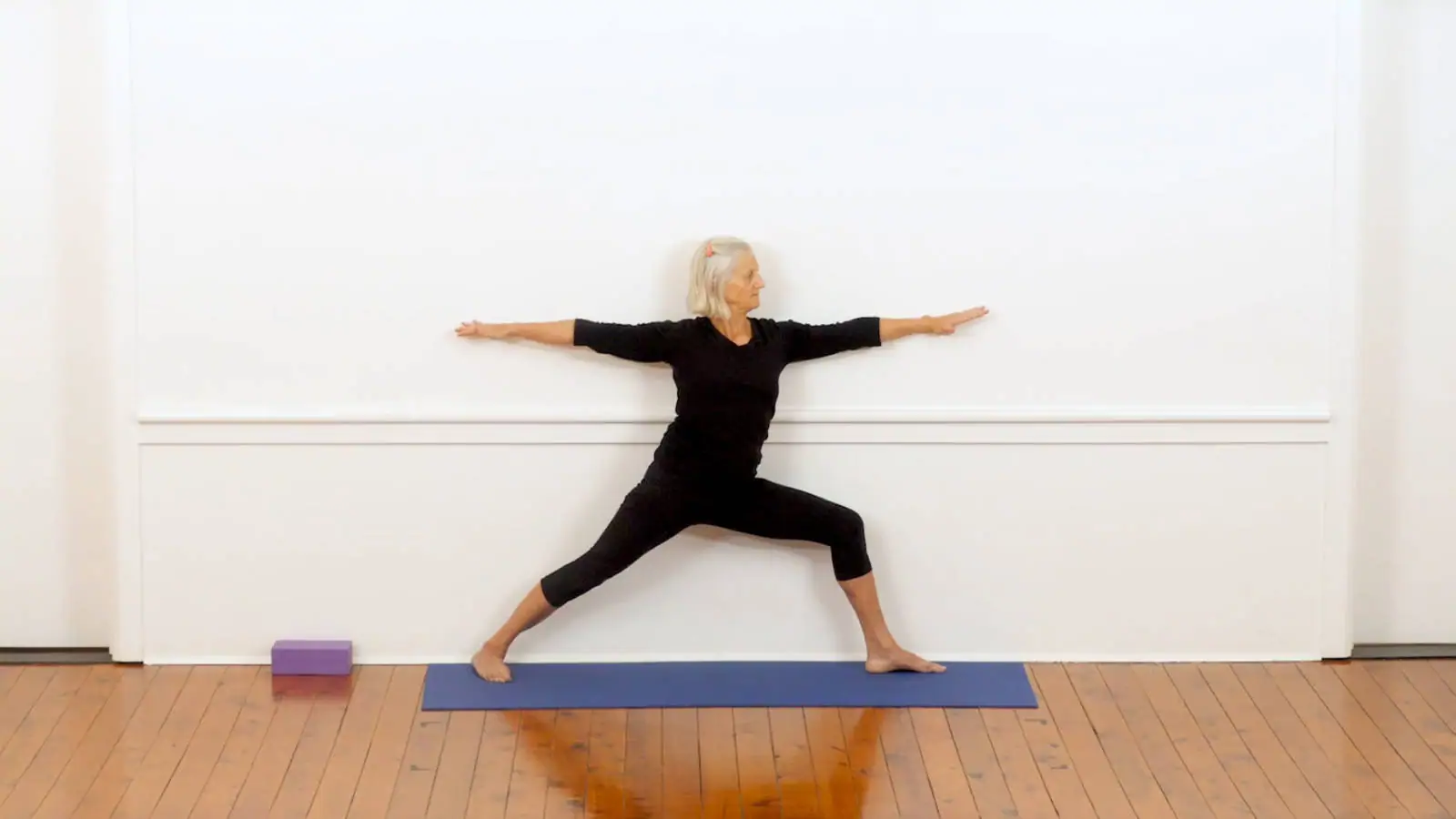Guide to this sequence
Today’s sequence is for learning, for watching where we are out of alignment. It can be practised to observe ourselves more closely in the Standing Poses, or also to work with more support during the Menstrual cycle (without the standing twists) or when feeling tired or unsteady.
Start in Supta Baddha Konasana, using a few folded blankets. Forward Virasana to release, and then come up for Uttanasana and Adho Mukha Svanasana (Dog Pose), creating an opening in the front groins and watching that the weight is evenly placed on the feet.
A little extra attention to Full Arm Balance (Adho Mukha Vrkasasana) today. Find the length of the arms through Half Uttanasana to the wall (and continue with this if in your Menstrual cycle), and then carry that through into Full Arm Balance. If you can’t easily get to the wall, check that your buttocks and legs are not staying too far back from the wall. Pincha Mayurasana, first taking the arms in a headstand clasp, with the head off the floor and going up that way, and then using the block and belt to bring stability as you go up into the full pose. Preparation if not inverting today.
For the Standing poses, place your mat horizontally, right up against the wall. The wall gives us an alignment check, it gives us stability so we can observe the intricacies of the pose more clearly. Step the feet apart each time, bringing the back heel to the wall. Start in Trikonasana, and then go to: Parsva Konasana, Virabhadrasana 1 and 2, Ardha Chandrasana with a block, Virabhadrasana 3 with the front hip against the wall for balance, Parivrtta Trikonasana, Parivrtta Parsvakonasana and then using blocks for the hands for Parsvottanasana and then Prasarita Padottanasana.
Now let’s have a look at Supta Virasana, considering a few different height possibilities to see what suits your back and knees best.
Then come up through Virasana Forward and set up for Sirsasana. Use T shape blocks to lie back over, if not inverting, or go into headstand preparation with three blocks set up against the wall.
Sarvangasana or Setu Bandha, to finish, and go into simple cross-legs forward when you come down.
Set up in Savasana, using the extra blankets folded in half and placed over the top thighs to release any tension held in the legs, and to help quieten the nerves as you come back to neutrality and stillness at the end of the practice.
Equipment required
- Mat
- 2x Blanket
- 2x Block
- Belt

